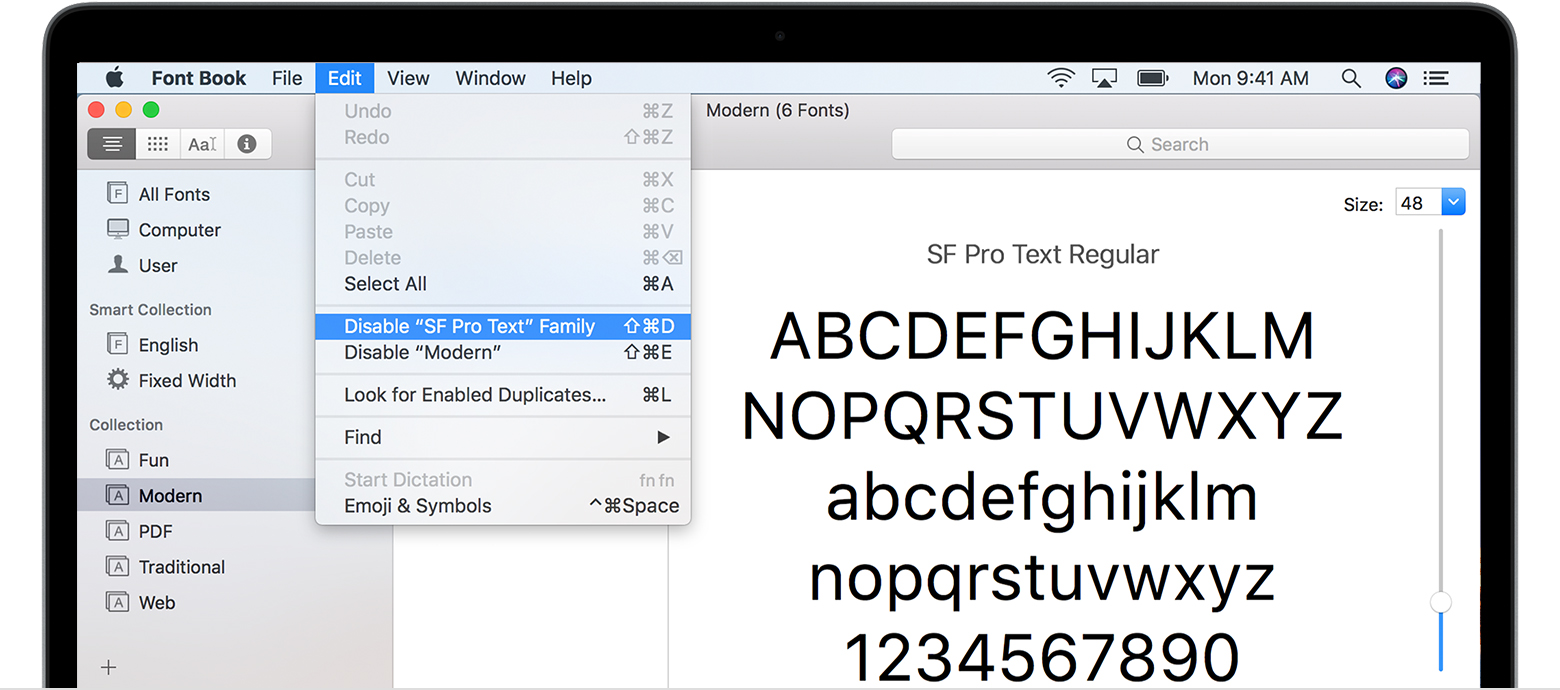Unfortunately, the Mac computer doesn’t have an easy way to view the Character Map. You can reach the Character Map on a Mac by pressing Command + Option + T. Then you can browse through your fonts to find special characters or glyphs. There is another option, but it’s not free. There is an app called Ultra Character Map in the Apple Store. Option 2: Manually input the font in Photoshop. Open 'Font Book' by searching for it in your finder. Click the '+' sign at the top of the window to add a new font. Find the font you want to install. (If you downloaded it recently, it will likely be in your downloads folder.) Double-click the.ttf file to install. After unzipping the file, select all the fonts that came with the zip. Double click on them to open a window that will display the fonts with an “install” option. Click on install to install the font successfully on your Mac. Unzip the zip file, and you will have the font folder.

Font Book User Guide
To use fonts in your apps, you need to install the fonts using Font Book. When you’re installing fonts, Font Book lists any problems it finds for you to review. You can also validate fonts later.
Install fonts
:max_bytes(150000):strip_icc()/003-how-to-manually-install-fonts-on-mac-2260815-a6d440a12e67431d9065cb8fda99e352.jpg)
On your Mac, do any of the following:
In the Font Book app , click the Add button in the Font Book toolbar, locate and select a font, then click Open.
Drag the font file to the Font Book app icon in the Dock.
Double-click the font file in the Finder, then click Install Font in the dialog that appears.

When you install a font, Font Book automatically validates or checks it for errors.
How To Use Downloaded Fonts On Mac
Fonts you install are available only to you, or to anyone who uses your computer, depending on the default location you set for installed fonts. See Change Font Book preferences.
Download system fonts
System fonts you can download appear dimmed in the font list in the Font Book window.

In the Font Book app on your Mac, click All Fonts in the sidebar.
If you don’t see the sidebar, choose View > Show Sidebar.
Select a dimmed font family or one or more dimmed styles.
Click Download at the top of the preview pane, then click Download in the dialog that appears.
If the preview pane isn’t shown, choose View > Show Preview. If you don’t see a Download button, switch to another preview type (the Download button isn’t available in the Information preview).
Validate fonts
If a font isn’t displayed correctly or a document won’t open due to a corrupt font, validate the font to find issues and delete the font.
In the Font Book app on your Mac, select a font, then choose File > Validate Font.
In the Font Validation window, click the arrow next to a font to review details.
A green icon indicates the font passed, a yellow icon indicates a warning, and a red icon indicates it failed.
Select the checkbox next to a failed font, then click Remove Checked.
Tip: To find warnings or errors in a long list of fonts, click the pop-up menu at the top of the Font Validation window, then choose Warnings and Errors.
Resolve duplicate fonts
How To Use Downloaded Fonts On A Mac
If a font has a duplicate, it has a yellow warning symbol next to it in the list of fonts.
In the Font Book app on your Mac, choose Edit > Look for Enabled Duplicates.
Click an option:
Resolve Automatically: Font Book disables or moves duplicates to the Trash, as set in Font Book preferences.
Resolve Manually: Continue to the next step to review and handle duplicates yourself.
Examine the duplicates and their copies, then select a copy to keep.
The copy that Font Book recommends keeping is labeled “Active copy” and is selected. To review other copies, select one.
Click Resolve This Duplicate or, if there’s more than one duplicate, Resolve All Duplicates.
If you want the inactive copies to go in the Trash, select “Resolve duplicates by moving duplicate font files to the Trash.”
In some apps, such as Mail or TextEdit, you can select a font to use as the default in the app. For more information, search the built-in help for the app.